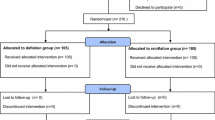Abstract
Purpose
Pneumatic tourniquets are frequently used in knee arthroplasty surgery. However, there is a lack of evidence to define safe tourniquet time in lower limb surgery. The primary aim of this study was to investigate whether tourniquet time influences the risk of postoperative complications after primary and secondary knee arthroplasty.
Methods
This study was a prospective register study. Since we wanted dispersion in tourniquet time, we included a consecutive series of 577 primary knee arthroplasties, 46 revision knee arthroplasties, and 18 patellar supplementing knee arthroplasties from a clinical audit database over a period of five years. The following postoperative complications were recorded: superficial wound infections, deep wound infections, deep vein thrombosis, pulmonary embolism, nerve injuries, compartment syndrome, cuff pressure injuries, and bandage injuries.
Results
Tourniquet time over 100 minutes was associated with an increased risk of complications after knee arthroplasty surgery (OR 2.2, CI 1.5–3.1). This increase in risk remained after adjusting for cuff pressure, sex, age, American Society of Anesthesiologists (ASA) classification, smoking, diabetes, and surgery indication (OR 2.4, CI 1.6–3.6).
Conclusions
Tourniquet time over 100 minutes increases the risk of complications after knee arthroplasty surgery and special attention is advocated to reduce the tourniquet time.

Similar content being viewed by others
References
Tai TW, Chang CW, Lai KA, Lin CJ, Yang CY (2012) Effects of tourniquet use on blood loss and soft-tissue damage in total knee arthroplasty: a randomized controlled trial. J Bone Joint Surg Am 94:2209–2215
Alcelik I, Pollock RD, Sukeik M, Bettany-Saltikov J, Armstrong PM, Fismer P (2012) A comparison of outcomes with and without a tourniquet in total knee arthroplasty: a systematic review and meta-analysis of randomized controlled trials. J Arthroplasty 27:331–340
Smith TO, Hing CB (2010) Is a tourniquet beneficial in total knee replacement surgery? A meta-analysis and systematic review. Knee 17:141–147
Ledin H, Aspenberg P, Good L (2012) Tourniquet use in total knee replacement does not improve fixation, but appears to reduce final range of motion. Acta Ortopaedica 83:499–503
Noordin S, McEwen JA, Kragh JF, Eisen A Jr, Masri BA (2009) Surgical tourniquets in orthopaedics. J Bone Joint Surg Am 91:2958–2967
Fitzgibbons PG, Digiovanni C, Hares S, Akelman E (2012) Safe tourniquet use: a review of the evidence. J Am Acad Orthop Surg 20:310–319
Kam PC, Kavanagh R, Yoong FF (2001) The arterial tourniquet: pathophysiological consequences and anaesthetic implications. Anaesthesia 56:534–545
Wakai A, Winter DC, Street JT, Redmond PH (2001) Pneumatic tourniquets in extremity surgery. J Am Acad Orthop Surg 9:345–351
Nitz AJ, Matulionis DH (1982) Ultrastructural changes in rat peripheral nerve following pneumatic tourniquet compression. J Neurosurg 57:660–666
Ochoa J, Fowler TJ, Gilliatt RW (1972) Anatomical changes in peripheral nerves compressed by a pneumatic tourniquet. J Anat 113:433–455
Pedowitz RA, Gershuni DH, Schmidt AH, Friden J, Rydevik BL, Hargens AR (1991) Muscle injury induced beneath and distal to a pneumatic tourniquet: a quantitative animal study of effects of tourniquet pressure and duration. J Hand Surg Am 16:610–621
Butt U, Ahmad R, Aspros D, Bannister GC (2011) Factors affecting wound ooze in total knee replacement. Ann R Coll Surg Engl 93:54–56
Jacob AK, Mantilla CB, Sviggum HP, Schroeder DR, Pagnano MW, Hebl JR (2011) Perioperative nerve injury after total knee arthroplasty: regional anesthesia risk during a 20-year cohort study. Anesthesiology 114:311–317
Rama KR, Apsingi S, Poovali S, Jetti A (2007) Timing of tourniquet release in knee arthroplasty. Meta-analysis of randomized, controlled trials. J Bone Joint Surg Am 89:699–705
Tai TW, Lin CJ, Jou IM, Chang CW, Lai KA, Yang CY (2011) Tourniquet use in total knee arthroplasty: a meta-analysis. Knee Surg Sports Traumatol Arthrosc 19:1121–1130
Horlocker TT, Hebl JR, Gali B, Jankowski CJ, Burkle CM, Berry D (2006) Anesthetic, patient, and surgical risk factors for neurologic complications after prolonged total tourniquet time during total knee arthroplasty. Anesth Analg 102:950–955
Nasell H, Ottosson C, Tornqvist H, Linde J, Ponzer S (2011) The impact of smoking on complications after operatively treated ankle fractures–a follow-up study of 906 patients. J Orthop Trauma 25:748–755
Owens WD, Felts JA, Spitznagel EL Jr (1978) ASA physical status classifications: a study of consistency of ratings. Anesthesiology 49:239–243
Clarke MT, Longstaff L, Edwards D, Rushton N (2001) Tourniquet-induced wound hypoxia after total knee replacement. J Bone Joint Surg Br 83:40–44
Konrad G, Markmiller M, Lenich A, Mayr E, Ruter A (2005) Tourniquets may increase postoperative swelling and pain after internal fixation of ankle fractures. Clin Orthop Relat Res 189–94
Tejwani NC, Immerman I, Achan P, Egol KA, McLaurin T (2006) Tourniquet cuff pressure: the gulf between science and practice. J Trauma 61:1415–1418
Olivecrona C, Ponzer S, Hamberg P, Blomfeldt R (2012) Lower tourniquet cuff pressure reduces postoperative wound complications after total knee arthroplasty: a randomized controlled study of 164 patients. J Bone Joint Surg Am 94:2216–2221
Conflict of interest
The authors declare that they have no conflict of interest.
Author information
Authors and Affiliations
Corresponding author
Rights and permissions
About this article
Cite this article
Olivecrona, C., Lapidus, L.J., Benson, L. et al. Tourniquet time affects postoperative complications after knee arthroplasty. International Orthopaedics (SICOT) 37, 827–832 (2013). https://doi.org/10.1007/s00264-013-1826-4
Received:
Accepted:
Published:
Issue Date:
DOI: https://doi.org/10.1007/s00264-013-1826-4




